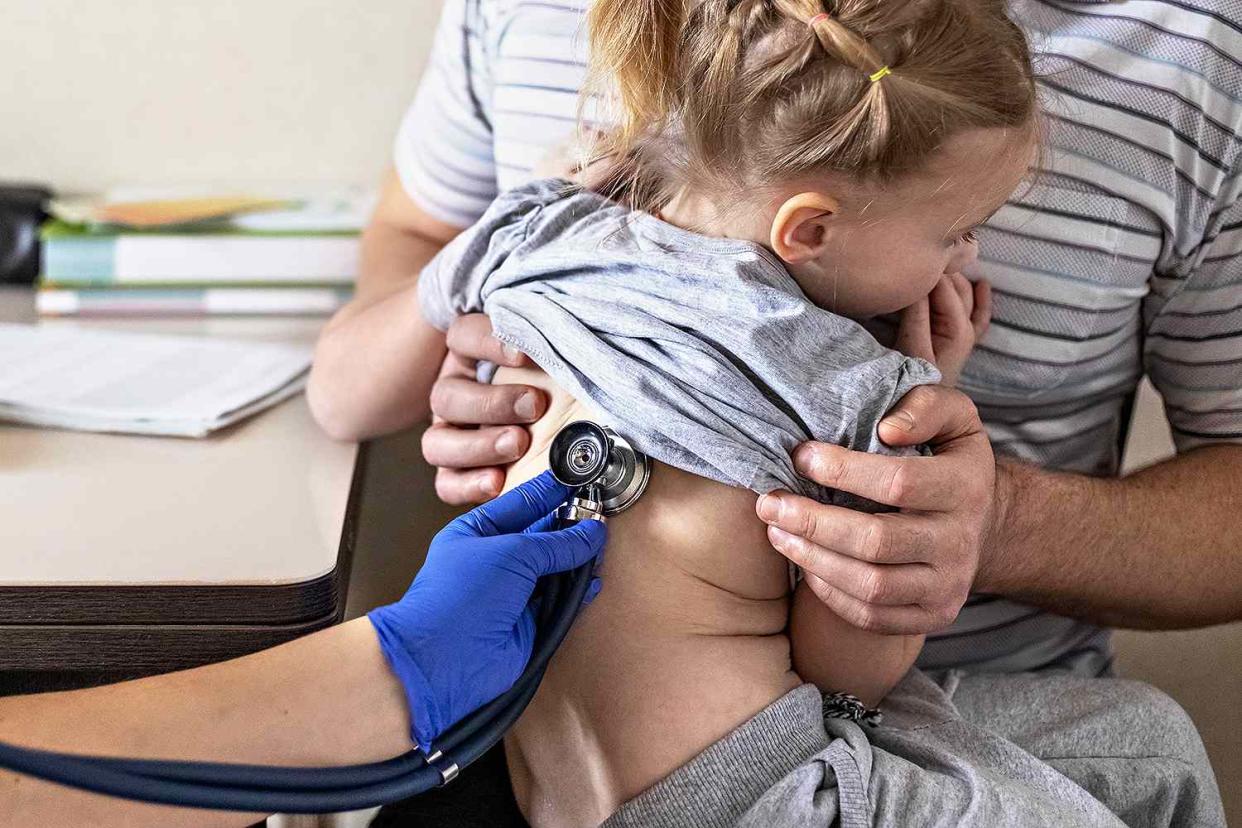2 U.S. Children Die from Group A Strep — Here's What Parents Should Know

Getty A child at a doctor's appointment
Two Colorado children have died due to severe strep infections as the country experiences a rise in pediatric cases.
The Colorado Department of Public Health and Environment (CDPHE) confirmed the two cases last week, stating in a press release that both children, not yet school-aged, died from invasive group A strep infections. The last pediatric death from group A strep in the state was in 2018.
Additionally, the CDPHE has reported 11 cases of invasive group A strep in children aged 10 months to 6 since Nov. 1.
The Centers for Disease Control and Prevention says it's currently investigating the current increase of invasive group A strep among children. With this rise, the agency is providing information that parents should know.
Strep A refers to the diseases that can occur after being infected with the bacteria called Group A streptococcus, including strep throat, scarlet fever, necrotizing fasciitis, rheumatic fever, impetigo, and more.
These infections can be severe if the bacteria invades tissue outside of where it normally lives. Each year about 14,000 to 25,000 cases of invasive Group A strep are confirmed, and between 1,500 and 2,300 people die from the disease, according to the CDC.
RELATED: 10-Year-Old Girl Dies After Being Diagnosed with Flu and Strep Throat
Never miss a story — sign up for PEOPLE's free daily newsletter to stay up-to-date on the best of what PEOPLE has to offer, from juicy celebrity news to compelling human interest stories.
The CDC says group A strep infections can occur at any age, but some infections are more common among certain age groups. For example, strep throat and scarlet fever are most common between ages 5 and 15, and impetigo is most common between ages 2 and 5.
Dr. Michael Green, medical director of infection prevention and antimicrobial stewardship at the UPMC Children's Hospital of Pittsburgh, told TODAY that it's not known why there is a rise in invasive group A strep, but it could be because a strain has become more prominent.
"Different areas of the country can have different strains of Group A in circulation," Green said. "You can have a nasty Group A strep in Ohio, but not in Pittsburgh. But you worry that it might get here from people who are traveling."
"Whenever we see a huge amount of respiratory viruses, we know we are going to see a bump up in bacterial infections," he told the outlet.
CDPHE states that warning signs of group A strep infections include sore throat, fever and chills, or new rashes, skin bumps, or red patches of skin that may be painful. Some severe group A strep infections can occur following respiratory illnesses like RSV, the flu, or COVID-19.
Parents are urged to seek medical attention immediately if they suspect their child has an invasive group A strep infection. It is also recommended that children stay up to date with flu and chickenpox vaccines because the illnesses can increase the risk for invasive group A strep infections.

